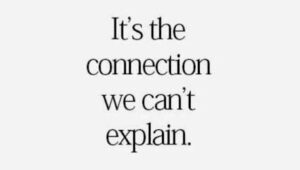
Though love may seem like an intangible, mystical energy, a domain beyond the reach of scientific examination, it’s deeply rooted in biological functions. The flushed face, the pounding heart, the obsessive thinking – these aren’t just the stuff of romance novels, but physical expressions of complex chemical processes in the brain. To comprehend this, we can
deconstruct romantic love into three discrete, yet interdependent, phases: lust, attraction, and attachment, each defined by a specific hormonal profile.
The first spark, lust, is mostly fueled by the sex hormones testosterone and estrogen. These hormones, though essential to sexual desire, also play a role in a variety of behaviors and physiological reactions, leading to the initial attraction we experience toward another individual. This phase is all about the raw, primitive urge, the basic need for physical closeness. Once the initial lust either develops or in some instances, skips over this step altogether, we move on to the stage of attraction. This is when the “love cocktail” occurs. Dopamine, the neurotransmitter of pleasure and reward, surges into the brain, producing feelings of euphoria, heightened concentration, and drive. Serotonin, initially repressed, later helps to stabilize mood and add to feelings of wellness. Norepinephrine ( Controls alertness and the fight-or-flight response )
or adrenaline (Involved in stress response and increasing heart rate )brings the thrilling rush, the pounding heart and clammy hands that go with the initial phases of infatuation. This phase is marked by obsessive preoccupation with the loved one, a feeling of excitement, and an intense need for reciprocation.
Lastly, in the event the relationship advances to its next stage, we enter into the period of attachment. It is when the long-lasting attachment is achieved, the blueprint of long-standing love. The role of oxytocin (Known as the “love hormone,” it plays a key role in social bonding, trust, childbirth, and lactation ) in generating feelings of intimacy, emotional bond, and trust cannot be underemphasized. Eagerly described as the “cuddle hormone,” it finds expression during intimacy such as physical hugging, kissing, and copulation and thus tightens partners’ relationships. Vasopressin (Regulates water balance in the body and plays a role in social bonding and blood pressure control )
is a second hormone with a role in attachment and enforces pair-bonding and commitment, especially in men. It is linked with protectiveness and territorial behavior and builds feelings of stability and security within the relationship. It is at this point all about the long term, about shared lives and about that deeper emotional bond which leaves its indelible mark. These are not merely intangible reactions chemically; they prompt very real behavior and emotion.

Love happens less in the heart and more in the brain , where hormonal releases and brain chemicals are triggered. Dopamine, serotonin and oxytocin are some of the key neurotransmitters that help you feel pleasure and satisfaction. So, your body often approaches love as a cycle. It feels good to be with that person, so your brain says, “Do that again.
